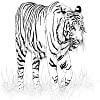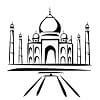- Home
- Holiday Ideas
-
-
- Choose Your Traveling Theme
-
- Adventure Tourism
-
- Cultural Tourism
-
- Tour Packages
-
-
- Packages by State
-
- Holidays by Interest
-
- Popular Tour Packages
-
- Fair And Festivals
-
- Ayurveda And Yoga
-
- Offers
-
- Destinations
-
Dehradun
The heart of Garhwal
Dehradun
Lying at the foothills of the majestic snow-capped Shivalik range, amidst verdant and plush sal forests, the quaint hill station of Dehradun, in Uttarakhand, is that the heart of the Garhwal region. Cut by two perennial rivers, Dehradun may be a favourite with travellers trying to find a serene natural retreat and also offers a good array of terrains to trek through and enjoys activities like hiking , paragliding, skiing, river rafting, angling and cycling, among others.
...Located within the scenic Doon Valley, Dehradun may be a great launchpad for exploring destinations like Mussoorie, within the Garhwal region. the town derives its name from the conjunction of two colloquial words, ‘dera’ meaning camp, and ‘doon’, a regard to the river valley.
Home to variety of spiritual sites set against the stunning backdrop of the mountains, Dehradun is believed to be one among the oldest cities within the country. Legend has it that Lord Rama, along side his brother, Lakshmana, performed penance here for killing Ravana.
The British occupation of Dehradun in 1815 left an enduring impact on the town , which is visible in its various colonial buildings, even today.
How to get there ?
By Air
Jolly Grant, 25 km from the city, is the nearest airport. The airport is connected with Delhi by daily flights.
By Road
Dehradun is well-connected with all the major cities in the country through well-maintained and motorable roads. Regular bus services also link Dehradun with all nearby places.
Rail
Dehradun station is well-connected with major trains like the Shatabdi Express, Mussoorie Express and Doon Express, functioning throughout the week.
Attractions
Dhamma Salila
Dhamma Salila, literally meaning the waters of Dhamma, may be a Vipassana meditation centre, which is nestled within the heart of the Doon valley and surrounded by the Himalayas. This picturesque centre, standing peacefully on the banks of the gurgling Noon river, lies on the brink of Dehradun. Established in 1995, it provides accommodation facilities to visitors trying to find a more immersive experience. It can house about 40 students in double rooms and also has provisions of separate meditation rooms and a pagoda (a Buddhist temple). About 78 cells are built for meditators within the precinct. The centre offers 10-day courses, twice a month, throughout the year. Dhamma Salila is found in Dholos village and may be a great alternative to Dhamma Sikhara, in Dharamsala.
Jim Corbett
Jim Corbett park is cover a neighborhood of 520 sq km that comprises large lakes, grasslands, marshy depressions, hills and riverine belts. Renowned for sheltering the Royal Bengal tigers of India, the park also houses quite 650 species of native and migratory birds, along side over 50 species of raptors, 33 species of reptiles, seven species of amphibians, seven species of fish and 36 species of dragonflies. A wildlife safari, either in an open jeep or on the rear of an elephant, makes for a memorable experience. Corbett is one among the few places within the country that allow visitors to remain overnight. Some rare species just like the endemic fish-eating crocodiles and otters also can be spotted.
The park may be a a part of the Corbett Tiger Reserve and was established in 1936 because the Hailey park . It also has the honour of being the place where Project Tiger was first launched in 1973. the whole park is split into five zones, namely Birjani that’s popular for its open grassland; Jhirna that’s open throughout the year; Dhela that’s a replacement eco-tourism zone; Dhikala that’s the most important zone of Corbett; Durga Devi that gives an honest sighting of birds; Sitabani Buffer that does not fall into the Corbett Tiger Reserve area. The park lies at a distance of about 163 km from Dehradun.
Kempty Falls
Located at a height of 4,500 ft, the Kempty Falls is situated about 13 km faraway from Mussoorie. it’s one among the foremost preferred locations for locals and tourists to enjoy the calm and soothing waterholes along side activities like boating, angling and camping. A trekking tour is out there through the falls and takes one through crystal clear rivers and plush forests. It results in the Malsi Deer Park, Jwala Devi Temple and other major attractions of Mussoorie. do not forget to hold your camera while visiting here as you’re likely to seek out some captivating views. The water of the falls after flowing downwards meets the Yamuna Falls. The falls was established within the 1830s by a British officer for organising tea parties.
Maya Devi Temple
This temple is devoted to Goddess Maya Devi and is one among the three shaktipeethas (devotional shrines where the severed body parts of Goddess Sati fell) in Haridwar, about 53 km away. the opposite two are Chandi Devi and Mansa Devi temples. Legend has it that when king Daksh Prajapati was having a holy yajna (a fire ritual). However, he did not invite his son-in-law Lord Shiva to the ceremony. Offended, his daughter, Goddess Sati immolated herself in her father’s yajna. Lord Shiva was grieved and enraged and commenced pacing the universe and performing his dance of cosmic destruction, tandava. Fearing that he would destroy everything in his path, Lord Vishnu severed the body of Sati together with his chakra. it’s believed that the guts and navel of the goddess fell at this temple.
The temple premises host the idols of Goddess Maya, Goddess Kamakhya and Goddess Kali. The temple is especially crowded during the Navratri festival (a holy nine-day period) and therefore the Kumbh Mela.
Mindrolling Monastery
Built in 1965 by Khochhen Rinpoche, this is often one among the six monasteries of the Nyingma school of Buddhism. it had been built to renew the religion within the region. Located at a distance of 10 km from Clement town, the grand monastery belongs to a special world of splendour. Its great stupa is over 60 m tall and is believed to be one among the world’s tallest stupas. It also contains a display of relics, murals and Tibetan art, housed in shrine rooms. An imposing 35-m-high gold Sakyamuni Buddha statue, dedicated to the Dalai Lama , presides over the monastery.
The monastery has continued to grow since its inception and is now among the most important Buddhist centres within the world. it’s an awe-inspiring site representing the profound dharma of Vajrayana Buddhism. It also includes Nagyur Nyingma college, one among the most important Buddhist institutes within the country. This state-of-the-art institute trains around 300 monks to expire the message of peaceful spirituality, and has facilities for education at primary also as secondary levels. it’s also home to a well-stocked library and a retreat centre. A visit to the monastery may be a unique experience blending spirituality, calmness and serenity.
Paonta Sahib
Dedicated to the memory of Shri Guru Gobind Singh, the tenth guru of the Sikhs, Paonta Sahib may be a quaint town that echoes with spirituality. the most attraction may be a majestic gurudwara that pulls an outsized number of Sikh pilgrims throughout the year. it’s said that its shrine protects variety of the Guru’s weapons.
A beautiful gold palanquin has been kept on display within the gurudwara and it’s believed that it had been donated by devotees. Inside the gurudwara, Shri Talab Sahib and Shri Dastar Asthan are important places and therefore the latter is legendary for the turban tying competitions held in it. Another popular venue inside the gurudwara is that the Kavi Darbar, where poetry competitions are held. As altogether gurudwaras, the langar (communal kitchen food) served here is additionally hospitable all.
Apart from the gurudwara, there also are variety of important temples just like the Vishwakarma Temple, which magnetize devotees to town. One also can visit a famous temple dedicated to Goddess Yamuna.
There are two legends that provide accounts of how the town got its name. one among them suggests that the name springs from the word foot, which roughly translates to ‘paonta’ because the blessed feet of the Guru skilled this town. the opposite says that the Guru lost an ornament named ‘paonta’ while bathing within the Yamuna river, and therefore the name of the town was derived from that. consistent with yet one more local legend, Guru Gobind Singh ji wrote the Dasam Granth (a popular sacred text of the Sikhs) during this town.
WANT TO RENT A CAR IN INDIA ?
Choose Your Traveling Theme
















